Kathrein ESO 180 HL Handleiding
Kathrein
Niet gecategoriseerd
ESO 180 HL
Bekijk gratis de handleiding van Kathrein ESO 180 HL (4 pagina’s), behorend tot de categorie Niet gecategoriseerd. Deze gids werd als nuttig beoordeeld door 5 mensen en kreeg gemiddeld 5.0 sterren uit 3 reviews. Heb je een vraag over Kathrein ESO 180 HL of wil je andere gebruikers van dit product iets vragen? Stel een vraag
Pagina 1/4

1 / 4
ESO 180 H 237500004
ESO 180 HL 237500006
Refl ector Heating Systems for CAS 180
Features
•Flexible special heating mats with integrated heat insulation
and PTFE insulated heating elements
•Good heat distribution due to an optimal fi t of the heating
mats on the refl ector
•Element carrier of aluminium foil, self-adhesive foil strips at
the front
•Thermal insulation made of bubble wrap with refl ective layer,
4 mm
•Built-in sensor to additionally defi ne the heating temperature
via a control
About These Instructions
This document is part of the product. These instructions
describe how to install and connect the refl ector heating
systems ESO 180 H, and ESO 180 HL.
►Do not install or use the devices until you have read and
understood this document.
►Keep this document for reference throughout the service life
of the devices. Pass this document on to any new owner or
user.
The most up-to-date version of this document can be found at
www.kathrein-ds.com
Scope of Supply
•4 heating mats with 3.5 m cable (H05RNF) and heating
temperature sensor
•Mesh reinforced aluminium foil, 0.05 x 17 m
•Adhesive fi lm (white) for covering the aluminium foil, 0.075 x
17 m
•4 elliptical segments made of white adhesive foil for covering
the outer contours of the heating mats
•8xcable ties, 360 mm
Transport and Storage
►If possible, transport and store the heating mats in their original packaging.
►Protect the heating mats against moisture and mechanical damage.
►Transport and store the heating mats only in the permitted temperature range between -40 and +80°C. Make sure there is no
condensation build-up.
Functional Description
The electric heating prevents snow and ice formation on the antenna refl ector surface which may lead to interruptions in satel-
lite reception. The heating for the antenna consists of four special heating mats with integrated heat insulation and PTFE insulated
heating elements. After installation, the heating mats fi t on the refl ector in an optimum way and guarantee a good heat distribution.
Two of the heating mats have an integrated temperature switch that turns o the heating at 80°C so that the system can be directly
operated at 230 V/50 Hz. To ensure e cient operation, we recommend the use of a control unit for the ESO 180 H. The control unit can
be operated with the built-in sensor, but also without a sensor. Possible system components:
Operation without temperature
sensor
Operation with temperature sensor Operation without control possible
ESO 180 H ESO 97 S ESO 97 SL YES
ESO 180 HL - ESO 97 SL ESO 99 S A control unit is mandatory for
operating the ESO 180 HL. For this
purpose, the required temperature
sensor is built into the heating mat.
ESO 180 HL: for exposed loca-
tions, with double the heating
power compared to ESO 180 H
(L = increased performance).

2 / 4
DANGER!
Danger to life from electric shock when touching electrical installations!
►Disconnect all devices and units from the power supply during installation.
►In order to comply with the regulations for outdoor installation according to DINVDE0100Part610, it is recom-
mended to have a residual current circuit breaker with a residual current of 0.03 A installed.
►Make sure that installation and connection are only carried out by qualifi ed specialist personnel.
►Make sure that modifi cations to the electrical installation are only carried out by a specialist. Do not make any unau-
thorised modifi cations yourself.
Installation and Safety Instructions
WARNING!
Risk of severe injuries during installation due to falling from or through the roof or due to falling parts!
►Wear stable shoes with non-slip soles.
►Use a working platform.
►Make sure that the person carrying out the installation or repair has a secure position to stand and hold on whilst
working.
►Make sure that the person carrying out the installation or repair does not su er from vertigo and can move around
safely on the roof or installation site.
►Make sure that the roof is su ciently strong and stable.
►Make sure that there is nobody underneath the antenna during installation/de-installation.
Installing the Refl ector Heating
Required tools and equipment
•Knife
•Scissors
Installing the heating mats
Processing temperature
The most favourable processing temperatures (object temperature and ambient temperature) are between +15°C and +30°C.
Processing below these temperatures is not recommended. Below the recommended temperatures, the adhesive may become too
hard and thus not achieve the desired adhesion.
The build-up of condensation must be avoided in any case. Condensation may build up when the adhesive tape and/or the surfaces
to be bonded are moved from a cold to a warmer environment. If this is the case, su cient time must be allowed after transport and
before bonding, so that all joining parts have the same temperature in the range indicated above.
Intended Use
ESO 180 H and ESO 180 HL (performance-increased version) are refl ector heaters for the CAS 180 antenna. They are used to prevent
snow and ice formation on the antenna refl ector surface which could lead to interruptions in satellite reception. Any other use,
or failure to comply with these instructions or documentation and instructions enclosed with the devices, will result in voiding of
warranty and guarantee. The following circumstances result in the loss of all warranty and liability claims towards the manufacturer:
►Improper installation
►Use of non-specifi ed mounting materials which cannot guarantee the mechanical safety
►Structural changes or interference with the components and mounting accessories in the kit which could endanger both the
mechanical and functional reliability
►Failure to observe the installation and safety instructions in this manual
1. Clean and degrease the antenna back panel.
The surface to be bonded must always be dry, free from dust, grease, oil, oxides, separating agents and other contaminants.
Isopropanol, ethanol, acetone, ethyl acetate, toluene or petrol can be used to remove dust, grease, oil, separating agents and
other contaminants. Other standard cleaning agents that do not leave any residues are also suitable. Please observe the respec-
tive safety regulations of the manufacturers of the solvents and cleaning agents.

3 / 4
Connecting the cables
WARNING!
Risk of severe injuries or material damage to the device!
►Make sure that this work is carried out only by qualifi ed specialist personnel.
1. Run the connecting cable of the heating mats and the sensor cable along the antenna carrier to the control unit.
2. Secure all cables with cable ties.
3. Run the cables from the bottom through the screw connection into the control device.
4. Run the mains cable from the bottom through the corresponding screw connection into the control device.
5. Test the heating for contact resistance and insulation resistance (R) before connecting the cables in the control
cabinet.
ESO 180 H ESO 180 HL
Contact resistance Target value 36.6 – 40.5 Ω (4x) 18.3 – 20.2 Ω (4x)
Actual value
Insulation resistance Target value > 999MΩ
Actual value
De-installing the Refl ector Heating
1. Disconnect all cables leading to the control unit and the heating mats. Observe the “Installation and Safety Instruc-
tions” on page 2.
2. Use hot air to remove the heating mats (including adhesive residues) from the back of the antenna.
3. Install new heating mats on the back of the antenna as soon as possible (see “Installing the Refl ector Heating” on
page 2).
When the fi lm is removed, adhesive residues remain, which can only be removed completely with considerable e ort.
You can glue the new heating mat over the adhesive residues.
2. Hold the heating mats on the antenna back panel to test their position. Observe the required position of the heating
mats (see fi gure on page 1, cable in the centre). Place the heating mats on the antenna back panel again and check if
they fi t correctly before gluing them on.
3. For gluing them on, hold the heating mats in place.
NOTICE!
Risk of material damage due to incorrect attachment of the heating mats!
If the heating mats are not attached to the antenna correctly, they can tear when the adhesive fi lm is removed.
►Make sure that the heating mats are aligned correctly. To do so, place the heating mats fl ush with the outer edge
of the antenna and pay attention to the equal distance on the antenna bracket. Once the heating mats have
been glued on, they cannot be repositioned!
►If possible, ask a second person to hold the heating mats.
4. Gradually remove the protective fi lm from the adhesive surface and press the heating mat fi rmly in place. Repeat this
process with all four heating mats.
5. Press the heating mats fi rmly to the antenna back panel. It can take up to 72 hours before the fi nal adhesive strength
is reached.
6. To prevent moisture and insects from entering the heating mat, adhere the mesh-rein-
forced aluminium foil all along the edges of the mat.
7. Clean the surface to be covered with the mesh-reinforced aluminium adhesive tape
(see 1.) to ensure the greatest possible adhesive strength of the white adhesive foil.
8. Cover the aluminium adhesive tape with the white adhesive foil. Stick the outer
contours of the heating mats with the elliptical segments according to the labelling
on the carrier foil and the other contours with the enclosed 75 mm wide adhesive foil.
oben
rechts
unten
rechts
oben
links
unten
links
Product specificaties
| Merk: | Kathrein |
| Categorie: | Niet gecategoriseerd |
| Model: | ESO 180 HL |
Heb je hulp nodig?
Als je hulp nodig hebt met Kathrein ESO 180 HL stel dan hieronder een vraag en andere gebruikers zullen je antwoorden
Handleiding Niet gecategoriseerd Kathrein
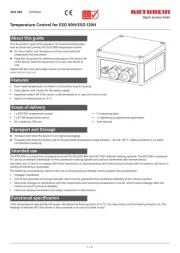
12 Mei 2025
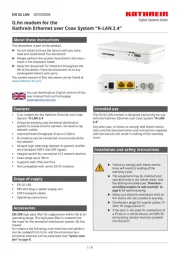
8 Mei 2025

5 Februari 2025
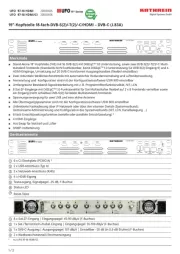
28 Januari 2025
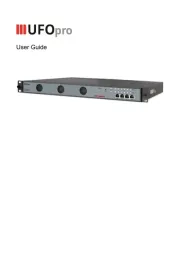
28 Januari 2025

28 Januari 2025

24 Mei 2024

24 Mei 2024

6 December 2023

13 Juni 2023
Handleiding Niet gecategoriseerd
- MARTVSEN
- Tamron
- Level Mount
- Maruyama
- SE Electronics
- Plantiflor
- Vantec
- REDARC
- Boso
- On-Stage
- Ferm
- Spear & Jackson
- Playtive Junior
- Winchester
- Coravin
Nieuwste handleidingen voor Niet gecategoriseerd

17 September 2025

17 September 2025

17 September 2025

17 September 2025

17 September 2025
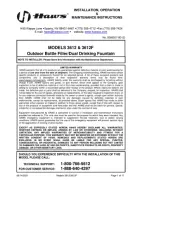
17 September 2025
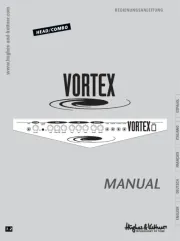
17 September 2025

17 September 2025
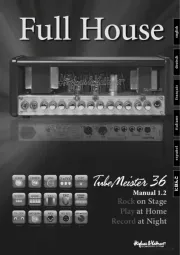
17 September 2025

17 September 2025